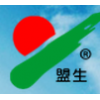Cerebroprotein Hydrolysate for Injection (III)
- FOB Price:Get Latest Price >
- Min.Order:1 Vial(s)
- Payment Terms:L/C
- Favorite
Business Type:Manufacturer
Country/Region:China
Ddu Verified
HOT Rank


Yunnan Mengsheng Pharmaceutical Co., Ltd.
We are professional supplier of Freeze-dried powder,Oral solid system,Oral solution,Small volume injection.
Business Type:Manufacturer
Country/Region:China
Ddu Verified
HOT Rank

[Component] This product is a sterile lyophilized formulation of Cerebroprotein Hydrolysate consisting of 16 amino acids and polypeptides from porcine brain tissues hydrolyzed by enzymes. Excipient is sodium hydrogen sulfite.
[Description] A white or pale yellow lyophilized powder or masses, freely soluble in water.
[Administration and Dosage]
This drug is for intravenous drip after dissolved in water for injection. Dosage and treatment are decided in accordance with patient’s age and illness for an individual period and each treatment should be continuously daily administered.
Generally, 60 mg of Cerebroprotein Hydrolysate (calculated by total nitrogen) is diluted in 250 ml of normal saline for slow intravenous drip. Administer once per day and each administration should be within 60 to 120 min. The treatment period could be 10 to 14 days or as per doctors’ suggestion.
[Contraindication]
Hypersensitivity to any of the product constituents
Status epilepticus.
Major epilepsia: usage of this product may increase attack frequency.
Severe renal dysfunction
[Adverse Reactions] The product shows good tolerance. In vivo and in vitro test as well as toxicity tests all show no potential teratogenicity, sensitization or carcinogenicity effects. Administration in large dose or injecting too fast may induce slight hotness; in rare cases, shivering or slight fever may occur, mostly related to the physical constitution of patients. Until now, no enduring adverse reactions after administration or life-endangering cases have been found.
Post-marketing monitoring and literature indicate following adverse reactions:
Allergic reactions: including rash, urticaria, erythema, maculopapule, skin itch, erubescence, laryngeal edema, cephalledema, facial edema, etc.; visible anaphylactoid reaction and allergic shock; symptoms include hidrosis, pallor, dyspnea, cyanosis, drop of blood pressure, etc.
Systemic influence: shiver, pyrexia, chill, hypodynamia, lumbago, backache, edema.
Respiratory influence: dyspnea, chest distress, suffocation, polypnea, cough, nasal obstruction, bronchospasm.
Nervous system influence: dizziness, vertigo, headache, convulsion, numbness, hyperspasmia, suffocation, dysphoria, tremor, depression, insomnia, epilepsy.
Digestive system influence: diarrhea, stomachache, nausea, emesis, constipation, dry mouth, rise of hepatic amino transaminase.
Cardiovascular system influence: palpitation, tachycardia, arrhythmia, elevation of blood pressure, drop of blood pressure.
Urinary system influence: rise of blood urea nitrogen
Administration site influence: ache and phlebitis at administration site.
[Precautions]
1. Administer strictly according to Indications and Administration and Dosage specified in the package insert.
2. Inquire administration and allergy history of patient in detail before administration. Discretion is advised for allergic patients.
3. Dilute the product strictly according to requirements specified in the package insert. Do not randomly change diluent, diluted concentration and volume of diluent. Dispense immediately before use. Do not place the dispensed drug for too long.
4. Compatibility of medicines is forbidden. Discretion is advised in combined administration.
5. Adverse reactions of product include allergic shock. Administer the product in a medical institute with rescue facilities. Suspend administration immediately in case of allergic reactions or other severe adverse reactions due to administration and start treatment.
6. Consult a doctor in case of any adverse event/reaction during administration. Inform the doctor of any administration of other drugs at the same time.
7. Place the product where it is beyond the reach of children.
8. Administration is forbidden in case of change in the character of product.
[Use during pregnancy and lactation]
Women during pregnancy are forbidden to administer this drug. Women in lactation should be cautioned to apply this drug.
[Use for children]
The safety of use of this product for children is not clear.
[Use in the elderly]
No data is available.
[Drug Interactions]
Cerebroprotein Hydrolysate should not be mixed with amino-acid injections in one infusion. If amino-acid is simultaneously administered, special attention should be paid to possible unbalanced amino-acid.
Treatment in conjunction with anti-depressants could cause adverse interactions leading to undue mental stress. In such cases it is recommended that the dose of the anti- depressant is lowered.
[Drug Overdose]
No data is available.
[Pharmacotoxicity]
It is reported that Cerebroprotein Hydrolysate is a unique nutriment for brain. It helps CNS in multiple ways, regulating and improving nerve cell metabolism, promoting synapse generation, inducing nerve cell differentiation, protecting nerve cells against damages by ischemia and neurotoxins etc. This drug can cross the blood-brain barrier to promote brain protein synthesis and affect the respiratory chain. It provides protection of anti-anoxia and improve brain energy metabolism. It activates adenylate cyclase and catalyzes other hormones systems. It provides neurotransmitters, peptide hormones and coenzyme precursors.
[Pharmacokinetics]
It is reported that Cerebroprotein Hydrolysate can cross the blood-brain barrier and get into nerve cells and amino-acid is rapidly metabolized in the brain. The half-life (T 1/2) is from few seconds to several hours.